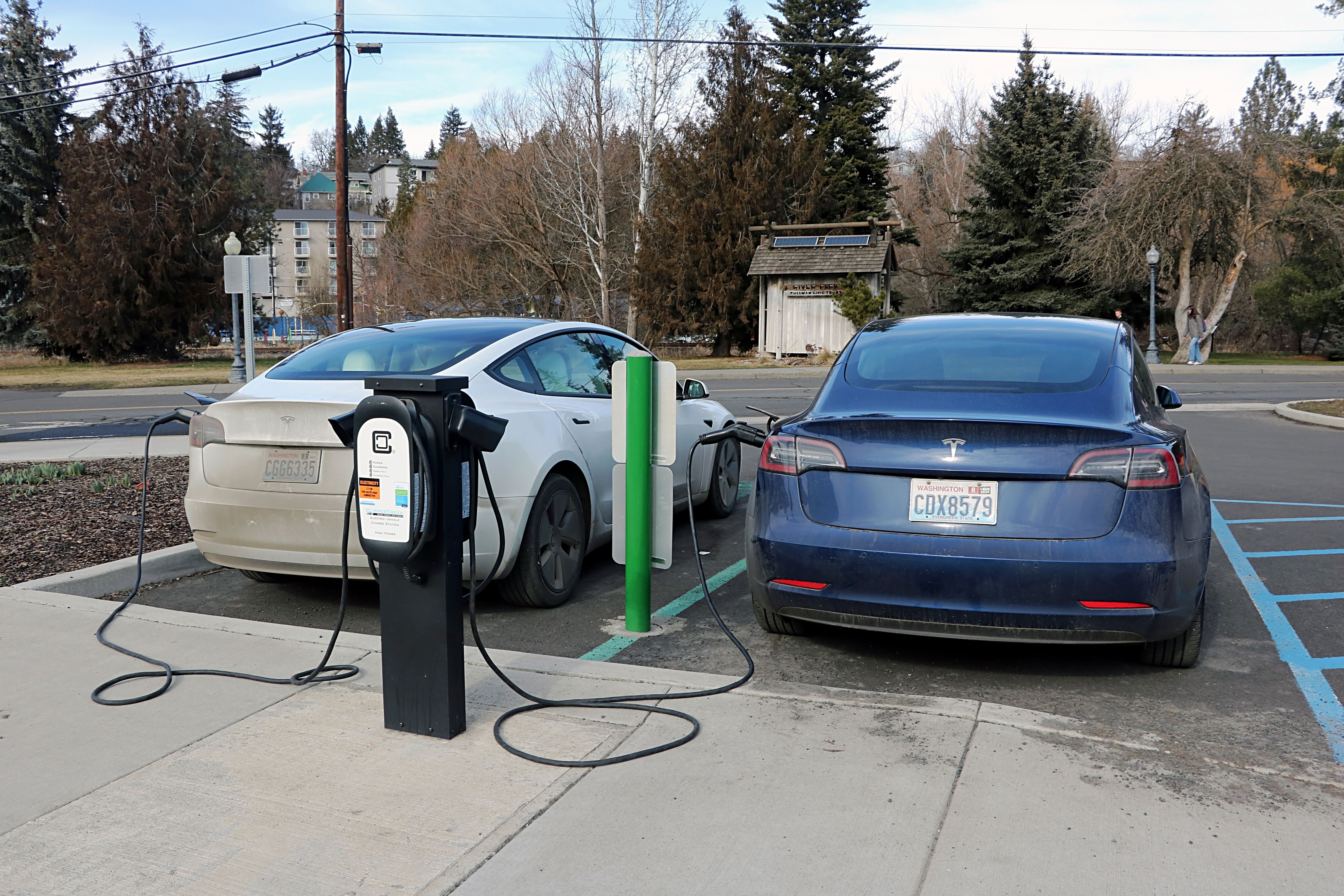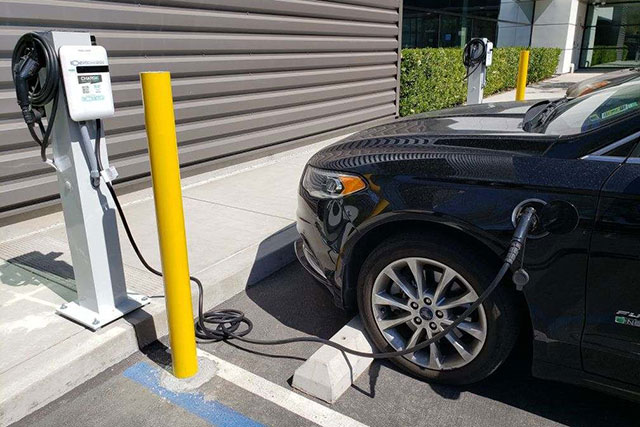Why 2024 Is a Game-Changer for EV Charging: Fads and Insights
As we approach 2024, the electric automobile (EV) billing landscape is established for considerable change, driven by the spreading of ultra-fast billing terminals and advancements in clever charging modern technologies. This development is underpinned by enhancing investments from both personal and public industries, which promise to ease longstanding worries such as range anxiety. The incorporation of eco-friendly power resources together with beneficial federal government policies is most likely to redefine the sustainability and accessibility of EV facilities. These growths elevate essential questions concerning the future of EV fostering and the effects for industries and consumers alike.

Development of Ultra-Fast Charging Terminals
Just how swiftly are ultra-fast charging terminals changing the electrical automobile landscape? The expansion of ultra-fast charging terminals is a critical growth in the EV industry, dramatically enhancing the comfort and usefulness of electric lorry possession. These terminals, qualified of delivering charging accelerate to 350 kW, can charge an EV's battery to roughly 80% in as low as 15-30 mins, effectively minimizing range stress and anxiety amongst consumers.
The growth of ultra-fast billing facilities is being driven by both private and public financial investments, showing a tactical shift towards sustainable transportation options. Major automotive manufacturers and energy business are teaming up to mount these terminals along major freeways and city centers, developing a substantial network that sustains long-distance travel and daily use.
Furthermore, improvements in battery modern technology are enhancing this growth, enabling vehicles to maximize the enhanced charging speeds. As the number of ultra-fast billing terminals remains to climb, they are expected to play a vital duty in accelerating EV adoption, promoting a shift in the direction of a cleaner and more lasting future. This development not just boosts user experience but likewise strengthens the stability of electric vehicles as a mainstream transportation option.
Advancements in Smart Charging Innovation
With the increasing combination of electronic innovation in the electric automobile sector, breakthroughs in smart billing innovation are considerably improving the effectiveness and comfort of EV billing. Smart billing systems leverage connectivity and information analytics to optimize the charging process, allowing individuals to charge their vehicles when electricity rates are lowest and require on the grid is minimal.

Interoperability is another essential innovation, as brand-new standards and protocols enable different EV models and billing stations to communicate seamlessly. This improves customer experience by giving more easily accessible charging choices throughout different networks. Eventually, the development of smart charging technology represents a significant step towards a more user-friendly and lasting EV ecosystem, leading the way for wider adoption and assimilation right into every day life.
Combination of Renewable Resource Resources
The combination of renewable energy resources into EV charging framework is ending up being progressively essential as the demand for sustainable services expands. This pattern not just helps in reducing the carbon footprint associated with electrical vehicle billing yet additionally enhances grid resilience by promoting decentralized power production.
Solar and wind power are at the forefront of this assimilation, with many charging terminals currently being or including photovoltaic or pv panels integrated in closeness to wind ranches. These eco-friendly sources can produce clean power, giving a sustainable energy supply for EVs. Advancements in energy storage space innovations, such as batteries, promote the effective storage space of excess power produced throughout optimal manufacturing hours, making sure that charging stations can run successfully even when eco-friendly generation is reduced.

Expansion of Billing Facilities
As electric car (EV) fostering accelerates, the growth of billing facilities has ended up being an essential emphasis for stakeholders throughout the auto and energy sectors - EV Charging news. The need for a durable and accessible billing network is vital to sustain the growing number of EVs when driving and to ease array stress and anxiety among customers
In 2024, we are seeing substantial financial investments from both exclusive companies and public entities aimed at enhancing the charging landscape. This consists of the installment of fast-charging stations along highways and in city centers, which can recharge EVs in a fraction of the time contrasted to standard chargers. Furthermore, collaborations between automakers and energy suppliers are assisting in the release of ingenious charging options to meet diverse consumer requirements.
Moreover, innovations in modern technology are leading to smarter billing systems that enhance power circulation and decrease expenses. The assimilation of these systems is crucial for fitting the predicted rise popular as even more consumers transition to electric movement. The expansion of charging facilities not only supports the EV market however likewise plays a vital function in accomplishing broader sustainability goals, making it a pivotal element in the advancement of transportation.
Government Plans and Motivations
Government plans and motivations here are increasingly shaping the landscape of electric automobile (EV) adoption and charging facilities development. Federal governments worldwide are recognizing the immediate read what he said requirement to transition to cleaner transport alternatives, leading to the application of different initiatives targeted at increasing EV fostering. These policies frequently consist of tax credit reports, rebates, and gives for customers and services that invest in electric lorries and charging terminals.
Along with direct economic rewards, numerous federal governments are developing ambitious targets for EV sales and mandating the installment of billing facilities in brand-new advancements. As an example, a number of nations have actually devoted to phasing out interior combustion engine cars within the next decade, creating a feeling of necessity that drives both consumers and producers towards electric options.
Furthermore, public-private partnerships are becoming a crucial element of these efforts, facilitating investment accountable networks and ensuring extensive accessibility. By lining up regulative frameworks with economic motivations, federal governments are not only cultivating a helpful setting for EV adoption yet likewise resolving concerns connected to vary anxiety and charging schedule. This durable plan landscape is established to make 2024 an essential year in the shift to electrical wheelchair.
Conclusion
The year 2024 is set to change the electric automobile charging landscape through the proliferation of ultra-fast billing terminals, innovations in smart billing modern technologies, and the combination of eco-friendly power sources. The growth of charging infrastructure, reinforced by encouraging government plans and incentives, will address range stress and anxiety and improve the charm of electric car possession. Jointly, these advancements will foster a easily accessible and lasting environment for electrical lorry fostering, ensuring a durable future for the market.
As we come close to 2024, the electrical vehicle (EV) charging landscape is established for significant makeover, driven by the check here expansion of ultra-fast billing stations and innovations in wise billing modern technologies. The spreading of ultra-fast charging stations is an essential development in the EV field, dramatically improving the convenience and usefulness of electrical vehicle possession. Clever charging modern technologies facilitate remote tracking and monitoring, making it possible for individuals to arrange billing sessions via mobile applications.
Government plans and rewards are increasingly forming the landscape of electrical lorry (EV) fostering and charging facilities growth.The year 2024 is established to transform the electrical automobile charging landscape via the expansion of ultra-fast charging terminals, improvements in smart billing innovations, and the combination of renewable power resources.